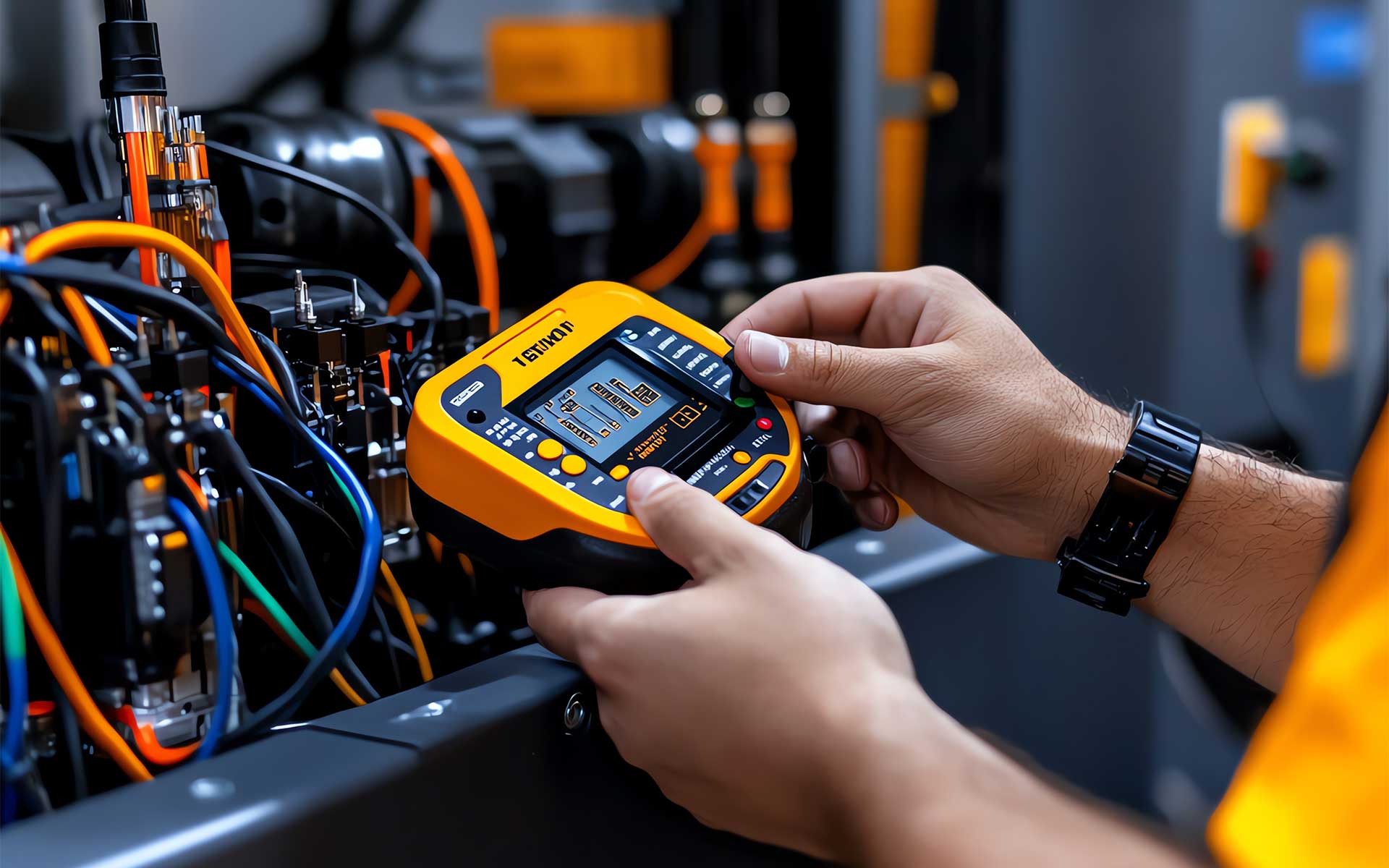Which should you choose for your application, circuit breaker vs fuse? It’s a common question and one we will clarify today. Although both components are instrumental in providing protection against electrical fires that overloads or other malfunctions can easily cause, there are a few key differences in application and working principle that determine when it's appropriate to select a fuse vs a circuit breaker or vice versa.
Today’s post explores each device, how they work, and the notable differences between the two. Understanding these concepts can help determine which to choose for your application, i.e., fuses vs circuit breakers.
What Is a Circuit Breaker and How Does It Work?
A circuit breaker is an electromechanical device. When making the comparison between the circuit breaker vs fuse, it’s safe to say that even the simplest circuit breaker design is more complex than the most advanced fuse. In electronic applications, circuit breakers represent the switch that protects electrical circuits from damage caused by excess current, typically as a result of power overloads and short circuits.
Circuit breakers can be activated and deactivated like a switch, toggling between on and off. When the circuit breaker is on, the current can flow through. Alternatively, when it is in the off position, the current cannot pass. The most universal example of a circuit breaker in action is in homes, i.e., you have to flip the breaker (turn it on or off) to allow electricity to flow through specific electrical circuits throughout a house. That’s why when a circuit gets overloaded, i.e., the current exceeds a safe level, the circuit breaker trips, causing the electricity to go off. Therefore, one must manually reset or “flip the breaker” to restore power to the circuit once the issue is resolved.
What Is the Fuse and How Does It Work?


Although fuses, like circuit breakers, protect electrical circuits from damage, they cannot be reset like circuit breakers. The basic construction of a fuse lends to its single-use capacity. Fuses consist of a small, thin metal wire or strip housed in a casing. The metal wire allows electricity to flow freely under normal conditions. However, when there is an overload or a short circuit, the electrical current exceeds the fuse's capacity, causing the wire to melt. When this happens, the electrical current is broken.
Due to this simplistic construction, fuses must be replaced after an overcurrent incident. However, it's critical to select the same type of fuse, i.e., a fuse rated with the maximum current they can handle. Otherwise, they may not offer the protection necessary.
Differences Between Fuses vs Circuit Breaker
If you’re considering one or the other for an application, understanding the differences between the two can help narrow the decision to select a circuit breaker vs fuse box or vice versa - especially since the functionality is so similar. Before we jump to explaining the differences, it’s worth pointing out the most noteworthy, which is that fuses protect electrical circuits from power overloads only. Circuit breakers, on the other hand, protect against both power surges and short circuits.
Let’s break down the fuse vs circuit breaker differences, including reusability, response time, breaking capacity, and more.
Reusability
Circuit breakers are reusable and do not have to be replaced, as you can just reset to continue operating. Fuses, on the other hand, are one-and-done, needing replacement if blown.
Operation Principle
Both circuit breakers and fuses protect electrical systems by interrupting the flow of current. However, they differ in how this is accomplished. Circuit breakers electromagnetically interrupt the electrical connection, while fuses use conducting materials (e.g., the wire) whose electrical and thermal properties are damaged when the current exceeds the maximum rating.
Operation Mode
A fuse breaker vs circuit breaker decision may require operating mode consideration. Circuit breakers are active, using moving parts with mechanical or electromagnetic processes, including manual resetting. Fuses are passive, needing no user interaction until blown, and need replacing.
Response Time
Fuses have a faster response time than circuit breakers. Fuses respond at an average of 0.002 seconds, while circuit breakers average 0.02 – 0.05 seconds.
Switching Action
Fuses have no switching action, just reaction and replacement. Circuit breakers, however, can switch between ON and OFF, lending to greater longevity.
Protection
As mentioned earlier, protection is a factor to consider in the electrical fuse box vs circuit breaker selection process. Fuses protect electrical devices from overloads only. Circuit breakers, however, protect against overloads and short circuits, offering more comprehensive protection.
Breaking Capacity
The breaking capacity differs between a circuit breaker vs fuse, as the fuse’s capacity is lower.
Application
A fuse vs circuit breaker comparison extends far beyond home electrical circuit protection. Both are widely used across industries to protect sensitive equipment, machinery, and critical infrastructure from electrical faults. Fuses are generally cheaper, making them a better choice for simpler, low-cost applications. Circuit breakers, alternatively, might be more expensive, but they are reusable and resettable, reducing long-term costs in systems with frequently occurring faults or limited maintenance access.
Part Cost
Fuses are incomparably cheaper than circuit breakers; however, the longevity of a circuit breaker vs fuse can outweigh this factor in certain applications.
What is a Fault Current


When selecting between the two electrical protection devices, it's critical to ensure the selection matches the system voltage. A device rated for the system voltage guarantees it can handle the electrical load without malfunctioning or posing safety risks. In the event of an issue with an electrical circuit, such as a short circuit or ground fault, an abnormal flow of electrical current occurs, which is a fault current. Issues like short circuits, ground faults, or insulation failures usually cause fault currents.
Fault currents typically exceed the normal operating current of the system, often leading to equipment damage, overheating, or even fire if not properly managed. Ensuring the protective device is suitable for the system's voltage and fault current levels is essential for maintaining safety and preventing system failures.
Factors Influencing Fault Current
There are several factors that can affect the maximum available fault current, including system voltage, impedance, and equipment ratings.
What is the Maximum Fault Current that the Protective Device is Designed to Stop?
It’s critical to consider the maximum available fault current that a protective device might need to interrupt, which is also called the circuit breaker or fuse interrupting rating or breaking capacity. This is the highest level of current a fuse or circuit breaker can safely interrupt without being damaged or allowing the fault current to continue flowing.
Circuit Breakers vs Fuses: How to Choose One?
Making a fuse panel vs circuit breaker decision involves considering several factors, like cost maintenance, complexity of the system, response time, and voltage/current ratings. Both offer their own unique advantages, making them better suited for different applications.
Making the decision between the two for electrical protection may involve some consideration. However, shopping for what you need at Peerless Electronics, a leading stocking distributor, is easy. The Peerless online marketplace stocks a wide variety of fuses and circuit breakers from industry-leading manufacturers. Plus, all Peerless Electronics purchases are supported by over 50 Value-Added Services, like custom circuit breaker panels and custom-tailored technical support.












































